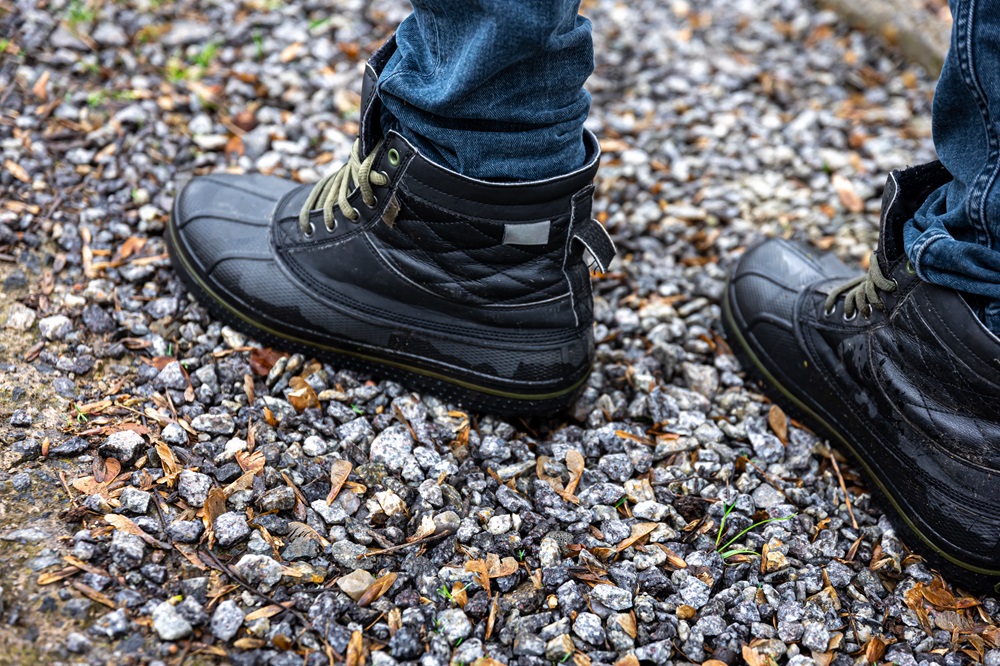The Ultimate Guide: Does Boot Weight Matter for Climbing Mountains?
When it comes to selecting the perfect pair of mens mountain climbing boots, weight is often a crucial yet overlooked factor that can significantly impact your climbing performance.
Whether you’re tackling technical routes or embarking on a casual trek, understanding how boot weight influences your climb could be the difference between summit success and early retreat.
The Science Behind Boot Weight and Energy Expenditure
Research from the Journal of Sports Science reveals that adding just 100 grams to each foot requires 1% more energy expenditure during movement.
This might seem minimal, but when you’re scaling thousands of vertical feet, every gram counts.
Think of it this way: carrying an extra pound on your feet is equivalent to adding 5-7 pounds to your backpack in terms of energy cost.
Weight Distribution Impact Table
| Boot Weight Category | Energy Cost | Best Suited For | Impact on Performance |
| Lightweight (<600g) | Minimal | Technical climbing, scrambling | Enhanced agility, reduced fatigue |
| Mid-weight (600-800g) | Moderate | Mixed terrain, general mountaineering | Balanced protection and mobility |
| Heavy (>800g) | Significant | Ice climbing, extreme conditions | Maximum protection, increased fatigue |
Different Types of Climbs and Their Boot Weight Requirements
Technical Alpine Routes
On technical routes, every ounce matters. Lighter boots allow for:
- Precise foot placement and better rock feel, crucial for delicate moves
- Reduced fatigue during long approaches and technical sections
For routes requiring mixed climbing, studies show that climbers wearing boots under 700g per boot demonstrated 15% better performance in technical sections compared to those wearing heavier options.
Traditional Mountaineering
When tackling traditional mountain routes, boot weight becomes a balancing act. The sweet spot typically lies between 700-900g per boot, offering:
- Adequate protection against rough terrain and cold conditions
- Sufficient support for carrying heavier expedition loads
The Psychology of Boot Weight
Research in sports psychology indicates that perceived equipment weight significantly influences performance.
Climbers reported feeling more confident and agile in lighter boots during technical sections, while heavier boots provided a greater sense of security in challenging conditions.
Impact on Different Skill Levels
Novice climbers often benefit from slightly heavier boots, as they provide:
- More stability and confidence on uncertain terrain
- Better protection during the learning phase
Advanced climbers typically prefer lighter options, having developed:
- Stronger foot technique and ankle stability
- Better movement efficiency
Weather Conditions and Boot Weight Considerations
In varying weather conditions, boot weight plays different roles:
Summer Alpine Climbing
Light boots (500-700g) excel here, offering:
- Maximum breathability
- Enhanced sensitivity for technical moves
- Quicker drying time after exposure to moisture
Winter Mountaineering
Heavier boots become necessary, typically ranging from 800-1200g, providing:
- Essential insulation against extreme cold
- Critical protection from sharp crampons
- Improved stability in deep snow conditions
Long-term Health Implications
Studies from the Journal of Mountain Medicine have shown correlations between boot weight and joint impact. Researchers found that using inappropriately heavy boots for technical climbing can lead to:
- Increased knee strain over time
- Higher risk of ankle injuries during technical movements
Economic Considerations
Investment in appropriate boot weight can significantly impact long-term climbing expenses:
Cost-Benefit Analysis Table
| Boot Category | Initial Cost | Longevity | Performance Impact | Overall Value |
| Premium Lightweight | Higher | 2-3 seasons | Excellent | High |
| Mid-range Weight | Moderate | 3-4 seasons | Good | Very High |
| Budget Heavy | Lower | 4-5 seasons | Fair | Moderate |
Expert Recommendations
Professional mountain guides consistently emphasize the importance of matching boot weight to climbing objectives. Based on extensive field testing and professional experience, they recommend:
- For technical alpine routes: Keep boot weight under 700g per boot
- For general mountaineering: Aim for 700-900g per boot
- For expedition climbing: Accept weights up to 1000g+ for necessary protection

Training Adaptations
To optimize performance with different boot weights, climbers should incorporate specific training:
Lightweight Boot Training
- Focus on technical footwork
- Develop ankle strength and stability
- Practice precise placement techniques
Heavy Boot Training
- Build lower leg endurance
- Improve overall strength for carrying extra weight
- Train with weighted packs to simulate conditions
Future Trends in Boot Weight Technology
The climbing industry is continuously innovating to optimize boot weight without compromising protection. Recent developments include:
- Carbon fiber reinforcement reducing weight by up to 20%
- New synthetic insulation materials providing warmth at lower weights
- Smart material integration for adaptive protection
Practical Tips for Selection
When choosing boot weight, consider these key factors:
- Primary climbing objectives
- Personal skill level and experience
- Typical climbing conditions and seasons
- Distance and approach characteristics
- Physical fitness and adaptation level
Conclusion
Boot weight’s impact on mountain climbing is significant and varies considerably based on the type of climbing, conditions, and individual factors. The key is finding the right balance for your specific needs.
While lighter isn’t always better, being mindful of boot weight can significantly enhance your climbing experience and performance.













